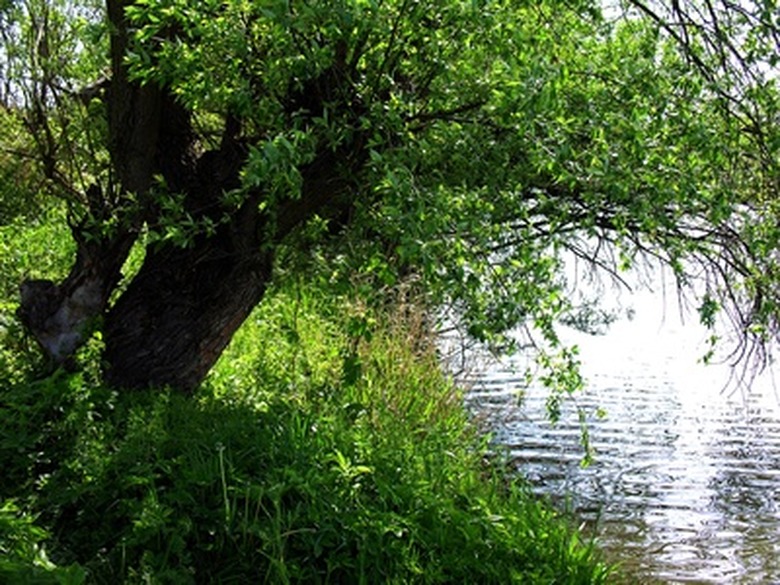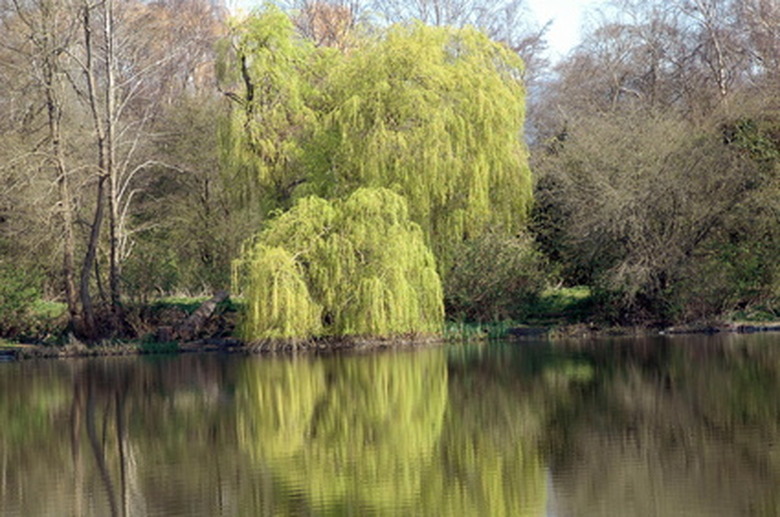How To Identify Willow Trees In Minnesota
Minnesota has four native willow species: weeping willow, white willow, laurel willow and curly or corkscrew willow. None of the willows grows in the coldest parts of the state (hardiness zone 2); corkscrew willow and laurel willow grow only in the southern half of Minnesota (hardiness zone 4). Learn to identify willows so you can purchase the right tree for your garden. All of Minnesota's native willows make good yard trees.
Step 1
Observe the shape of the willow tree. If the branches grow down toward the ground, making an umbrella, you've discovered the weeping willow. Weeping willows have pale green foliage and grow frequently on the banks of streams and ponds.
- Minnesota has four native willow species: weeping willow, white willow, laurel willow and curly or corkscrew willow.
- None of the willows grows in the coldest parts of the state (hardiness zone 2); corkscrew willow and laurel willow grow only in the southern half of Minnesota (hardiness zone 4).
Step 2
Notice whether the tree's branches grow straight or curl wildly. If the branches twist and turn in a corkscrew fashion, you are looking at the curly or corkscrew willow tree. Corkscrew willows can be challenging to identify when leaves obscure the branches, so get up close to identify the tree.
Step 3
Note the shape of the leaves. Trees with dark green, ovoid leaves may be laurel willows (Salix pentandra). These trees reach only 30 to 40 feet in height and sometimes remain smaller, more shrublike. In the summer months, laurel willows have long, yellow-green fruit pods that resemble small chili peppers.
- Notice whether the tree's branches grow straight or curl wildly.
- In the summer months, laurel willows have long, yellow-green fruit pods that resemble small chili peppers.
Step 4
Notice whether the underside of the willow leaves have fine white or silver hair. This is the key to identifying the white willow (Salix alba), the last of the native willows. Some cultivars of white willow have yellow or red twigs. White willow also grows well on wet sites and can be found along rivers and streams.
Willow Trees & Ponds
All willows grow well near water, but not all are good choices for small ponds. The form of the weeping willow and its 40-foot height are reasons why many landscapers and home gardeners choose to plant them by ponds. Willows have invasive roots that seek water. They can also clog drains. A moderate windstorm might be enough to bring down some branches. A few species of willow can become weedy, so you might want to avoid planting these by your pond. Willows love water — lots of water. If the weather is hot and the water is also evaporating rapidly, you may need to add water to the pond.
- Notice whether the underside of the willow leaves have fine white or silver hair.
- A few species of willow can become weedy, so you might want to avoid planting these by your pond.
Tip
Carry a native tree identification guidebook with you to provide detailed images of Minnesota's willow trees.
References
- Arbor Day: Weeping Willow
- Arbor Day: Scarlet Curls Willow
- North Carolina State University Cooperative Extension: Salix Babylonica
- University of Illinois Extension: White Willow
- Washington State University Clark County Extension: Pacific Willow
- Missouri Botanical Garden: Salix Discolor
- University of California IPM Online: UC IPM Illustration
- Commonwealth Scientific and Industrial Research Organisation: Water Savings From Willow Removal

